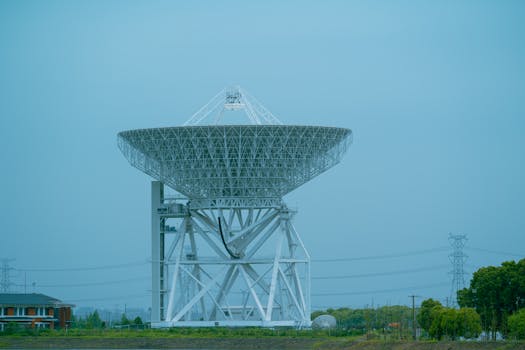Updates from Above: Essential Insights into the Latest in Satellite Telecommunications

Updates from Above: Essential Insights into the Latest in Satellite Telecommunications
Satellite Telecommunications
Satellite telecommunications have come a long way since the launch of the first commercial communications satellite, Intelsat 1, in 1965. Today, satellite telecommunications play a vital role in global communication, providing connectivity to remote and underserved areas, supporting disaster recovery and response efforts, and enabling global communication networks. The latest updates in satellite telecommunications are focused on improving the speed, capacity, and reliability of satellite communications, as well as reducing costs and increasing accessibility.
The development of new satellite technologies, such as high-throughput satellites (HTS) and very high-throughput satellites (VHTS), has significantly improved the capacity and speed of satellite communications. These satellites use advanced technologies, such as spot beams and frequency reuse, to provide higher speeds and greater capacity than traditional satellites. Additionally, the use of advanced modulation techniques, such as quadrature amplitude modulation (QAM), has improved the efficiency of satellite communications, allowing for more data to be transmitted over the same amount of bandwidth.
Recent Trends and Innovations
Several recent trends and innovations are shaping the future of satellite telecommunications. One of the most significant trends is the growing demand for satellite-based broadband services, particularly in developing countries and remote areas where traditional telecommunications infrastructure is lacking. This demand is driven by the need for affordable and reliable internet access, as well as the growing use of digital technologies, such as e-commerce, online education, and telemedicine.
Another significant trend is the development of satellite constellations, which involve launching multiple satellites into low Earth orbit (LEO) to provide global coverage and capacity. These constellations are being developed by companies such as SpaceX, OneWeb, and Amazon Kuiper Systems, and are expected to provide high-speed, low-latency internet services to underserved areas and remote communities. The use of satellite constellations is also expected to enable new applications, such as IoT (Internet of Things) connectivity, autonomous vehicles, and smart cities.
Challenges and Opportunities
Despite the many advances and innovations in satellite telecommunications, there are still several challenges to be addressed. One of the main challenges is the issue of space debris, which poses a significant risk to the safety and reliability of satellite communications. The growing number of satellites in orbit is increasing the risk of collisions and interference, which can have serious consequences for satellite operations and global communication networks.
Another challenge is the need for regulatory frameworks to govern the use of satellite technologies and ensure that they are used in a way that is safe, secure, and sustainable. This includes the development of regulations to manage the use of satellite spectrum, prevent interference, and protect the environment. The use of satellite technologies also raises important questions about privacy, security, and data protection, which must be addressed through the development of robust regulatory frameworks and industry standards.
Conclusion
In conclusion, the latest updates in satellite telecommunications are focused on improving the speed, capacity, and reliability of satellite communications, as well as reducing costs and increasing accessibility. The development of new satellite technologies, such as HTS and VHTS, and the use of advanced modulation techniques, are significantly improving the efficiency and effectiveness of satellite communications. The growing demand for satellite-based broadband services, particularly in developing countries and remote areas, is driving innovation and investment in the satellite industry, and is expected to enable new applications and services, such as IoT connectivity and autonomous vehicles.

